Top 5 Most Beautiful Historical Sites in Mali
Mali is Africa's eighth-largest country by population. It is a landlocked country in West Africa with a rich history. Mali is home to a diverse range of ... read more...religious sites, cultural attractions, and scenic natural areas. Mali's well-known historical sites draw visitors from all over the world. So, let's have a look at one of the most beautiful historical sites in Mali that worth seeing.
-
The Sudano-Sahelian architectural style is represented by the Great Mosque of Djenné, which is a massive brick or adobe structure. The mosque is located in the flood plain of the Bani River in Djenné, Mali.
The Great Mosque of Djenne is a notable cultural landmark and a UNESCO World Heritage Site. It is considered one of the greatest Sudano-Sahelian architectural achievements and one of the most beautiful historical sites in Mali. Although the existing scaffold-like, mud-brick construction was restored in 1907 by the French authority and local masons, the earliest mosque built on this floodplain dates from the 13th century. Notice the cone spirals and three box-like minarets standing tall over the main entrance on the northern side as you approach the site. Explore the colorful hallways frequented by worshipers, including the elaborate prayer wall facing Mecca, during visitation hours.
It is not just the heart of the Djenné community, but also one of Africa's most famous sites. In 1988, UNESCO listed it as a World Heritage Site, along with the "Old Towns of Djenné."Location: Djenné, Mopti, Mali
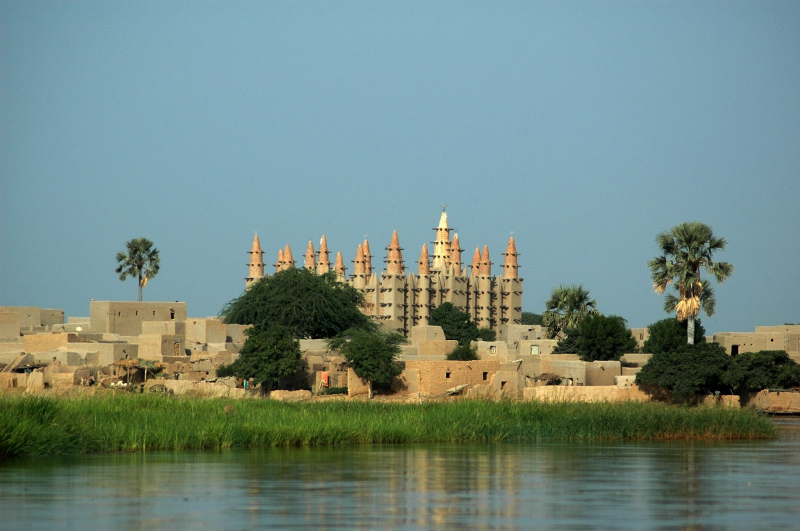
Photo; inspirock 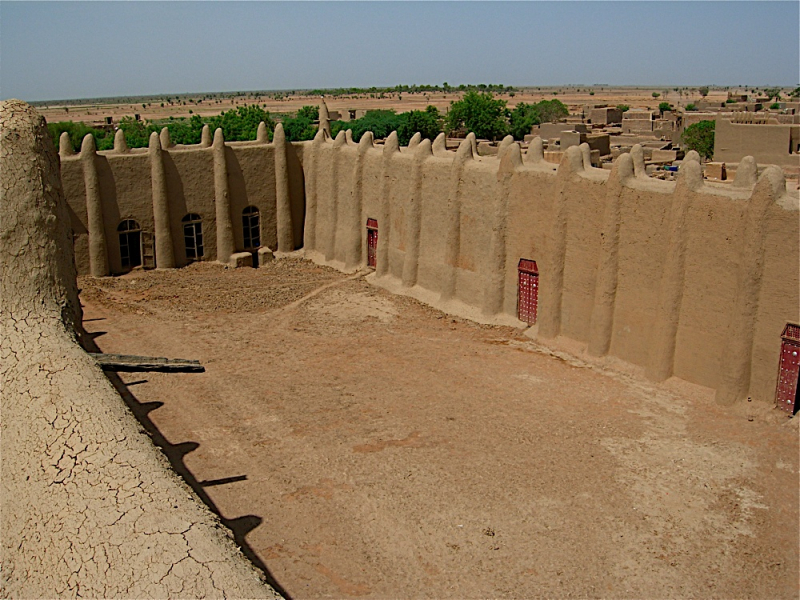
Photo: inspirock -
The Djinguereber Mosque in Timbuktu, Mali, was established in 1327 and is referred to as Djingareyber or Djingarey Ber in several languages. It was designed by Abu Ishaq Al Saheli, who received 200 kg (40,000 mithqals) of gold from Musa I of Mali, the Mali Empire's emperor.
The Djingareyber Mosque is entirely made of earth and organic materials such as fiber, straw, and wood, except for a small section of the northern facade that was reinforced in alhore (limestone blocks, also widely used in the rest of the town) in the 1960s and the minaret, which was also built in limestone and rendered with mud. It features three inner courts, two minarets, twenty-five rows of pillars aligned east-west, and a 2,000-person prayer space.
Djinguereber is one of four madrassas that make up Timbuktu's University. In 1988, it was added to the list of UNESCO World Heritage Sites, and in 1990, it was deemed endangered owing to sand encroachment. The Aga Khan Trust for Culture began a four-year project to restore and renovate the Mosque in June 2006, and it is being carried out and funded by the Aga Khan Trust for Culture.
Location: Timbuktu, Mali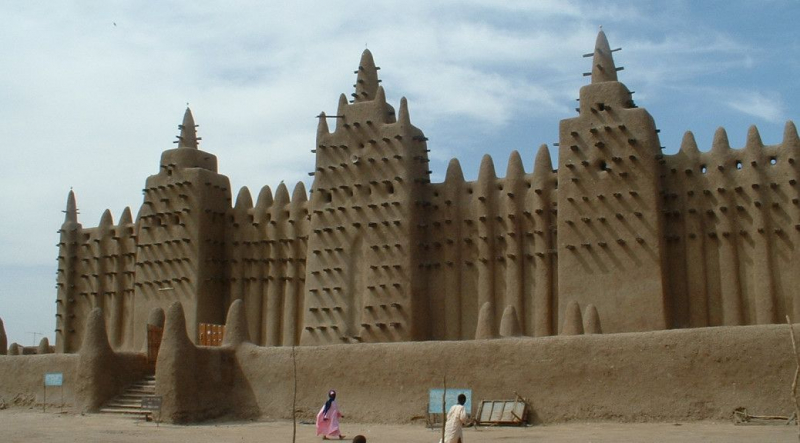
Photo: ppinterest 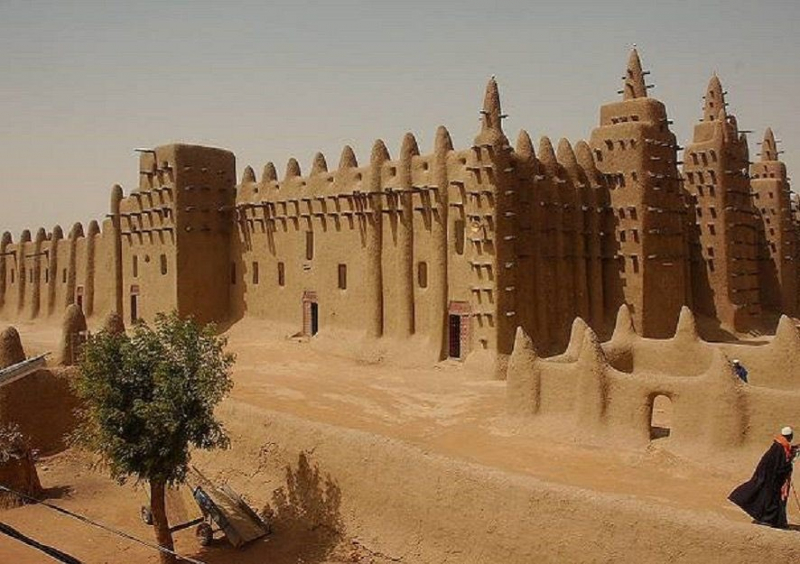
Photo: twitter -
The Sacred Heart Cathedral is the cathedral of the Archdiocese of Bamako and is located in Bamako, Mali's capital.
Bamako started out as a traditional village. It was progressively urbanizing in the late nineteenth century, attracting a growing number of newcomers, particularly after it was established as the colony's seat of government in 1897. The end of 1897 saw the establishment of the first Catholic mission in Kati (approximately 15 kilometers from Bamako), from which catholic priests visited Christians in Bamako, primarily officers, merchants, workers, and soldiers.The Catholic mission of Kati purchased land in Bamako in 1907 and constructed a church for regular services in 1910. The cathedral's construction, however, began on February 21, 1925, with Archbishop Sauvant blessed the first stone in the presence of Marshal Petain. The structure is now operational after two years. The cathedral in Bamako was constructed in 1936. It was the city's only official Catholic worship location until 1957. On February 21, 1956, Bishop Pierre-Louis Leclerc was enthroned as the first archbishop of Bamako. At 1988, he was laid to rest in the cathedral.
Location: Bamako, Mali
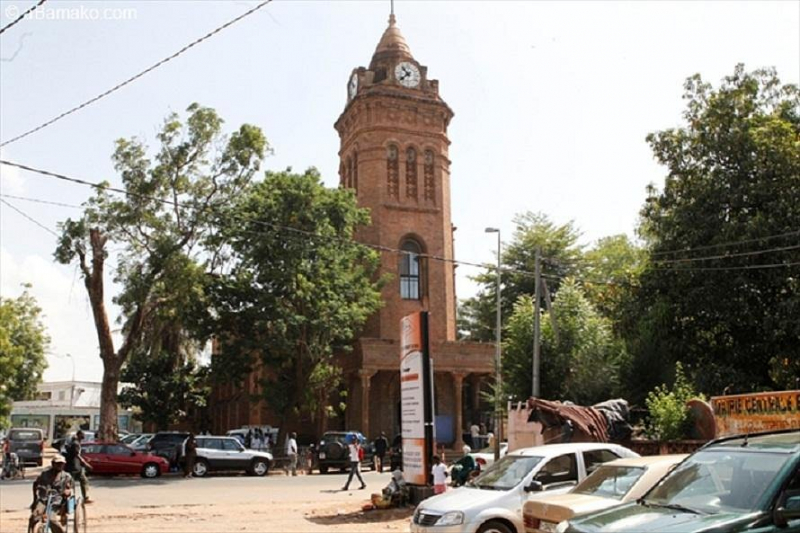
Photo: tripadvisor 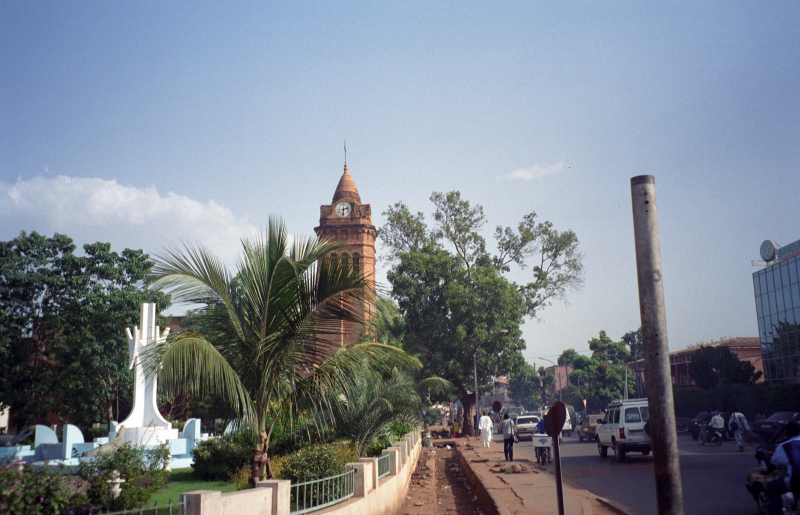
Photo: wikipedia -
Askia Mohammad I, one of the Songhai Empire's most prolific monarchs, is thought to be buried in the Tomb of Askia in Gao, Mali. It is a UNESCO World Heritage Site that was built around the end of the fifteenth century.
The tomb is described by UNESCO as a good example of the West African Sahel's massive mud-building traditions. A pyramidal mausoleum, two mosques, a cemetery, and an assembly area are all part of the complex. It is Gao's largest pre-colonial architectural monument, standing 17 meters tall. It is a prominent example of the Islamic architectural style, which expanded over the region afterwards.The enlargement of the mosque buildings in the 1960s and mid-1970s, as well as the installation of a wall around the site in 1999, are recent changes to the site. Throughout its history, it has also been re plastered on a regular basis, which is an important part of the maintenance and repair of mud constructions. In the early 2000s, electricity was added, allowing ceiling fans, lights, and a loudspeaker to be mounted on top.
The city of Gao uses Askia as a mosque and a publicly owned cultural facility on a regular basis. Both national and municipal regulations safeguard the site and a buffer zone around it.Location: Gao, Mali
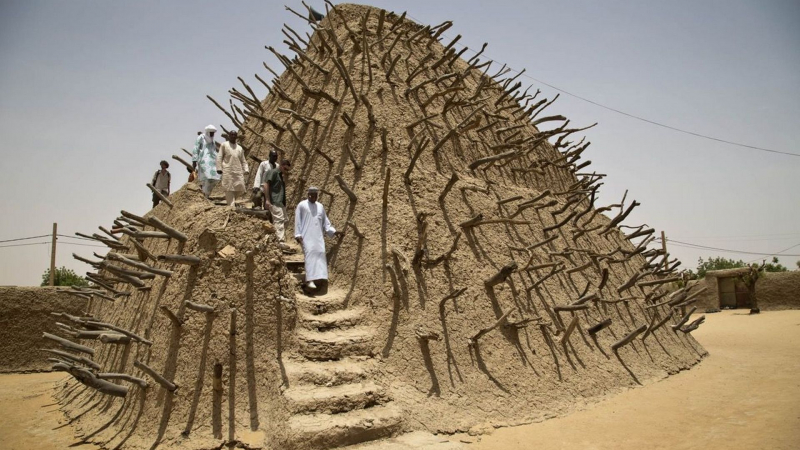
Photo: islamicarchitecturalheritage 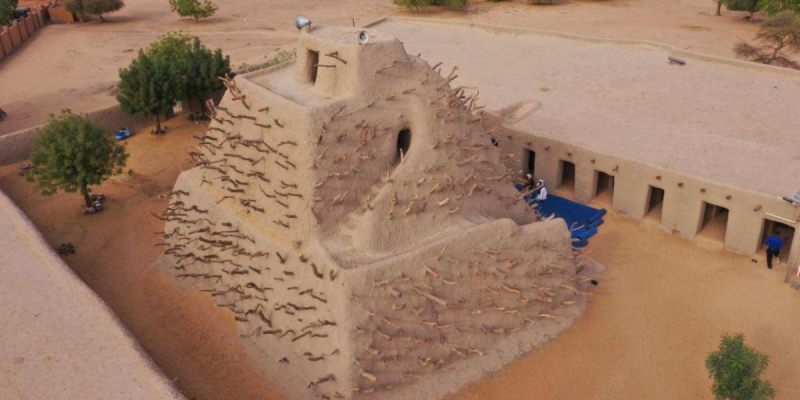
Photo: cultureincrisis -
The French governor of Sénégal, Louis Faidherbe, built a fort at Médine in 1855 to reinforce French control over the Sénégal River and serve as a platform for development into the interior. Two years later, in 1857, the Toucouleur forces under al-Hjj Umar Taal unsuccessfully besieged French colonial soldiers under Faidherbe in the Siege of the Fort de Médine.
The Malian government nominated the Médine Fort to the UNESCO World Cultural Centre's tentative list of heritage sites on March 19, 2009. Today, it is considered as one of the most beautiful historical sites in Mali. The public is welcome to visit the Fort du Médine. A 2 km west of the settlement is a historic train station on the Dakar-Koulikoro line, as well as a European-style cemetery with mid-nineteenth-century tombs. The population of the village is estimated to be around 1800 people, and there is a small market held every day.
Location : Medine, Mali
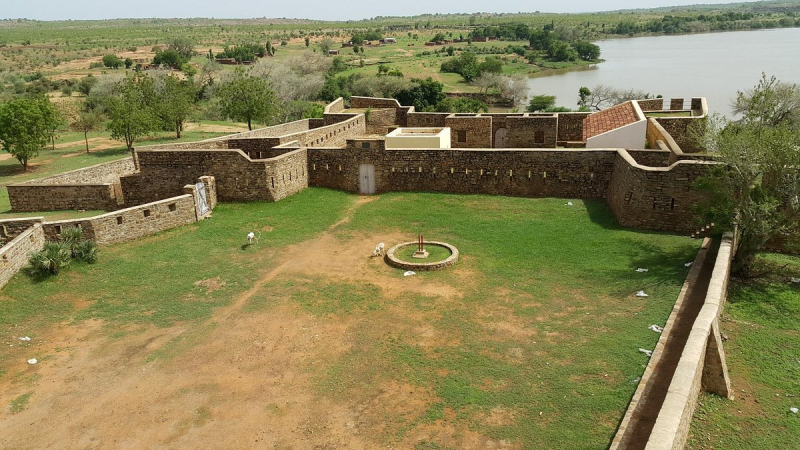
Photo: tripadvisor 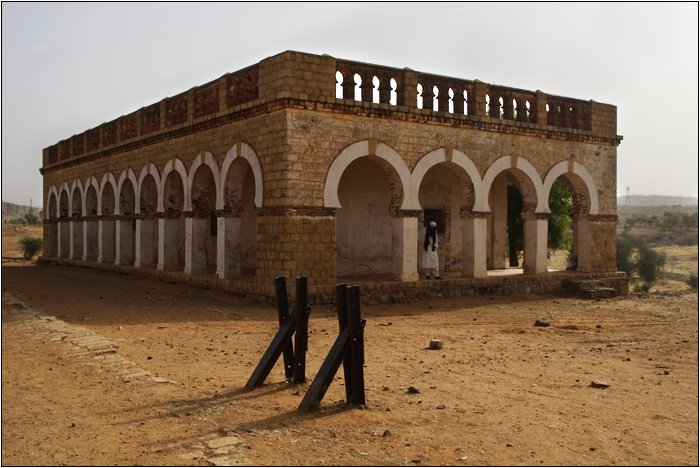
Photo: mapio


























